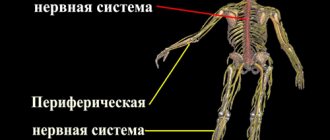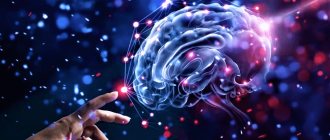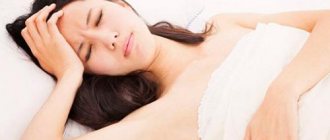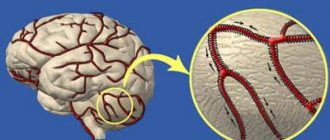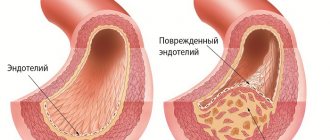When it comes to anxiety, headaches can be both a symptom and a cause. People with anxiety disorders may have symptoms that interfere with sleep, relationships, physical health, work or school, and daily life. Along with the emotional symptoms of tension and fear, anxiety can cause physical symptoms such as sweating, rapid heartbeat, digestive problems and headaches.
The most common type of headache is called tension headache, which:
- usually develop on both sides of the head
- may occur along with soreness or stiffness in the shoulders and neck
- usually goes away within a few hours
- rarely interferes with people going about their daily activities
Migraines are associated with more severe pain. Research has shown that people who suffer from frequent migraines tend to experience anxiety and depression more than other people.
Migraine:
- usually causes moderate to severe throbbing pain
- develops on one side of the head
- may occur along with nausea, vomiting, and sensitivity to light
- lasts for hours or even days
- may interfere with people's ability to carry out daily activities
Anxiety and headache - causes
Scientists are exploring the connection between anxiety and headaches. It is still not clear whether anxiety or headache is the causative factor, or whether the answer will be the same in each situation.
A 2020 study found that children with anxiety will have more headaches than children without anxiety. The researchers also concluded that anxiety symptoms were more severe among children who experienced headaches.
Other headache triggers that are associated with anxiety include:
- poor sleep habits
- drinking either too much or too little caffeine
- excessive alcohol consumption
- stress
- hormonal changes
- barometric changes
- drinking chocolate and red wine
- eye strain
Which organs are affected by negative emotions?
They say that all diseases come from the head. Doctors guessed about this back in ancient times. Today, modern medicine draws attention to statistics according to which 60% of chronic diseases appear due to “harmful” thoughts and experiences. Moreover, the patient’s successful recovery depends only 15% . The remaining 85% depends on the patient’s attitude towards his own health and mood.
What emotions cause illnesses and how can negativity, worries and anxieties affect our body?
Resentment, gossip and exaggeration of what is happening.
If a person is often offended, for no reason and for a long time, then most likely he has kidney problems. Those who like to gossip and judge may also suffer due to diseases of this organ. And if a person is prone to exaggerating the significance of problems, then he faces a cyst .
Irritability, hatred, anger, intemperance, rudeness and rudeness
These negative emotions often cause diseases of the liver, gallbladder and spleen. Avoid such feelings, try to find a hobby or business to which you would direct all your emotions. Be patient with people.
Vengefulness and rancor
Everyone is familiar with the expression “keep a stone in your bosom.” It means that a person has retained some kind of anger and is waiting for the moment to strike. Grudges and the desire for revenge cause the formation of stones in the internal organs. In this case, it is important to learn to forgive, let go and not hold anger against those who hurt you.
Denial of love, unbelief, pride, envy, jealousy and longing
These emotions negatively affect the functioning of the heart. To make your heart work like a good Swiss watch, start living life to the fullest, enjoying every day, without putting off your happiness until later. Start believing in love, kindness and people.
Selfishness, self-pity, fears and irresponsibility for one’s life
These emotions have a bad effect on the endocrine system. The function of the adrenal glands is inhibited, pancreatic disorders are likely, and diabetes may appear. What to do? Understand that you are not the center of the earth, take your life into your own hands and accept responsibility for your every decision and action.
Self-examination, doubts
This provokes lung diseases - asthma, bronchitis, attacks of shortness of breath, etc. What to do? Stop doubting and thinking through everything, and start doing.
Evil intentions, dark thoughts, bad deeds
Strong negativity towards people causes intestinal problems. If a person is also greedy, he may become constipated. And if he likes to judge, then he may develop diarrhea. What to do? Pay attention to yourself and your life.
Softness, willingness to take on other people's problems, fear of being hit from behind
Such emotions lead to diseases associated with the neck - here the spine can become ill and the lymph can become inflamed.
Feeling of uselessness, feeling of loneliness
The back hurts , as if a person has a burden of problems that he has to carry himself. What to do? Show friendliness to others, believe in people, learn to trust and start doing good deeds.
Restraint
Constant restraint and self-control lead to headaches and migraines. People who constantly control themselves and cannot relax are advised to have fun more often, relax and do things that will release their emotions, for example, sports or dancing.
Try to experience only positive emotions and be healthy!
Treatment and home remedies
Treatments for anxiety and headache disorders include medications and therapy, or home remedies. People with anxiety may benefit from seeing a psychologist or therapist.
Your doctor may prescribe preventive medications for headaches:
- Antidepressants
- Anti-anxiety medications
: These include medications such as benzodiazepines that your doctor may prescribe during outbreaks.
- Beta blockers
Migraines often require prescription medications, which people may take at different times.
- daily for prevention
- at the beginning of a symptom to stop the attack
- during an attack, from pain
Other methods to help manage headaches and anxiety:
- Relaxation
: Yoga, breathing exercises, muscle relaxation and other techniques can help reduce your physical response to stress. - Biofeedback
: Doctors can use biofeedback to help people sense changes in their bodies and work with them to reduce their stress response. - Cognitive behavioral therapy (CBT)
: This practice helps people learn to think about and respond to problems in new ways, including pain and anxiety. - Support groups
: can be helpful for people in a variety of situations, including those living with anxiety and chronic pain.
Style in your life
Everything is as always, but something is gnawing from the inside, preventing you from enjoying life. What to do when the cause of anxiety is unknown and it arises out of nowhere? It is necessary to find out which of the anxiety hormones is running rampant and try to reduce its level in the blood.
The nervous and endocrine systems of the body are controlled by a single center. The nervous system sends impulses along nerve fibers. The endocrine system distributes certain hormones through the blood, which, by controlling the vital functions of the body, control the emotional state, good mood or internal anxiety.
Endocrine surge.
When unexplained anxiety appears, the cause must be sought in hormones. Every woman faces emotional outbursts once a month - during menstruation. Significant changes in estrogen and progesterone levels occur in the middle of the cycle and at the end. It happens that in the middle of a conversation with a friend, an inexplicable hostility suddenly sets in, everything about her begins to irritate. This happens during ovulation. From days 12 to 21 of the cycle, the surge of estrogen gives way to a sharp decline, and progesterone levels rise.
A very strong hormonal change occurs after childbirth. This is due to excessive concern for the baby's life, which sometimes develops into postpartum depression. Mothers check every minute whether the baby is breathing and are afraid to go outside with him. There are a variety of reasons for concern.
To make hormonal changes less noticeable and increase estrogen levels, for 7–10 days it is advisable to take 0.4 g of tocopherol 60 minutes after breakfast and drink a carrot-and-cream drink (150 g of juice and 50 g of cream).
You need to eat foods containing phytoestrogens. These are soybeans, celery, linden blossom, ginseng root, and cherry.
To normalize the hormonal function of the sex glands, it is recommended to drink freshly squeezed juices from fruits and vegetables every month for a week. It is very useful to eat berries with small seeds, fresh or in the form of jam.
Adrenalin.
Adrenaline makes you worry and worry. It is produced in the adrenal glands. But the main stress hormone is corticoliberin, which is produced in the subcortical region of the brain. The ACTH hormone is synthesized in the pituitary gland, which conveys orders to the adrenal glands. They release danger hormones into the blood: adrenaline, cortisol and norepinephrine. Because of this, complexion may change, heart rate increases, blood pressure increases, sweating becomes stronger, blood vessels narrow, and trembling appears in the limbs.
Women are more likely to suffer from depression. They are more likely to panic and experience anxiety. For frequent stress and increased anxiety, you often have to pay with infertility. Don't try to eat away your worries with sweet treats. Danger hormones can increase blood sugar levels and prevent insulin from bringing it back to normal. This can lead to diabetes.
Also, do not show your emotions too much: scream, break dishes or slam doors when you are angry. Such reactions only increase stress. People who control themselves experience difficulties more easily.
When you feel the first signs of anxiety, you need to call on your sense of humor to help. Laughter can help lower stress hormones better than any medicine. Those who respond to stressful situations with laughter calm down completely after about an hour. Those who take troubles too seriously, on the contrary, become aggressive, picky, irritable and touchy.
But if not you, but your baby has health problems, you should definitely see a doctor right away. At the same time, if you need to help with colic in babies, and the doctor has prescribed you certain medications, instructions for their use can easily be found on the Internet.
Causes of headache and nausea
Among the causes of nausea and headaches are infectious and non-communicable diseases, pathologies of the nervous and cardiovascular systems. Soreness manifests itself when there is insufficient blood flow to the brain, intoxication and other disorders. Constant headache, nausea, dizziness are alarming symptoms that indicate not ordinary fatigue, but dangerous disorders. In this case, you should definitely contact for diagnosis and determine the cause of poor health.
Migraine and nausea
Migraine is an acute headache, often one-sided. It can occur in men and women of any age and is chronic. Among its causes are changes in climatic conditions, stress and fatigue, and attacks can also occur for no apparent reason. Migraine occurs in several stages, each of which is characterized by certain symptoms.
- The prodromal period can last from several hours to several days. During this time, there are no headaches or nausea, but other symptoms occur. The patient feels irritability, fatigue, and frequent mood swings. Deterioration of the digestive system and lack of appetite may also occur.
- Migraine aura is a period of time (from 5 minutes to an hour) that immediately precedes a headache attack. It is observed in 80% of cases, so the patient can know in advance when an attack will begin. Nausea begins without headache, dizziness, decreased hearing and vision. In some cases, the aura can be severe, including speech disturbances and hallucinations.
- A headache attack can last from several hours to several days. The patient has a headache to the point of nausea, and performance decreases. The pain is one-sided, may weaken, but then progress again. Its characteristic localization is the temple area, forehead and orbit.
- Postdromal period - continues for several days after the attack. The patient experiences difficulty concentrating, depression and weakness, and constant drowsiness. After 1–2 days he can return to his usual lifestyle.
Treatment of migraine involves taking specific medications prescribed by a doctor - conventional painkillers are ineffective during an attack. Frequent occurrence of acute pain in the head and nausea is dangerous to health. Migraine is accompanied by a deterioration in blood supply to the brain, so over time it can provoke the development of a heart attack or stroke.
Increased pressure
Headache and nausea with high blood pressure are characteristic symptoms. Normal blood pressure readings are 120/80, but in some cases they can increase. This means that the degree of blood filling of the vessels exceeds their compensatory ability. Chronic hypertension occurs with weakness and decreased elasticity of the arteries, vascular spasm, atherosclerosis, and can also be a consequence of endocrine diseases, including diabetes. The risk of its manifestation increases in old age, in the presence of excess weight, due to poor nutrition and bad habits.
An attack of arterial hypertension is manifested by a complex of characteristic symptoms:
- severe headache and nausea;
- disruption of the digestive system;
- redness of the skin and visible mucous membranes;
- tinnitus, decreased visual acuity;
- heart rhythm disturbance.
An equally dangerous condition is increased intracranial pressure. It is impossible to measure it at home, so it is determined by clinical signs. This indicator includes several components: blood pressure, fluid of the cerebral ventricles and the brain itself. As it increases, the patient has a very headache and nausea, hearing and vision impairment occurs. An increase in both arterial and intracranial pressure poses a great danger. Excessive blood supply to the vessels of the brain can lead to their rupture and the development of hemorrhagic stroke. To correct the condition, it is recommended to take a course of antihypertensive drugs and dosage physical activity.
Low blood pressure
Hypotension is a decrease in blood pressure. In some patients, low levels are considered normal, especially with low body weight. However, if the pressure is reduced by attacks during which the patient begins to have a headache and nausea, the condition is dangerous. Secondary hypotension is a characteristic symptom of various chronic diseases of the endocrine, cardiovascular and other systems. Its reasons include:
- phlebeurysm;
- hypothyroidism - decreased functioning of the thyroid gland;
- insufficiency of the anterior pituitary gland;
- deficiency of fluid, salts and microelements from food;
- heart pathologies;
- taking certain medications that promote fluid removal or cause vasodilation.
During an attack of hypotension, headaches and nausea occur. It can last from several hours to several days, while blood pressure readings are constantly changing. The patient experiences pallor of the skin and mucous membranes, weakness and dizziness. A typical symptom is an increased heart rate, as a compensatory response to insufficient supply of oxygen and nutrients to organs and tissues.
Viral diseases
Respiratory viral infections, influenza and sore throat are common seasonal diseases that affect the respiratory tract. They are manifested by a sore throat, cough and runny nose, increased body temperature and general weakness. However, the first sign may be a headache that causes nausea. It manifests itself when the immune system is activated in response to the introduction and spread of a viral infection. Treatment is aimed at increasing the level of immune defense, as well as preventing further transmission of the virus. Bed rest, drinking plenty of fluids, monitoring body temperature, and taking symptomatic medications against sore throat and runny nose are recommended.
Lyme disease
Borreliosis (Lyme disease) is an infectious disease that can be contracted through a tick bite. With his saliva, the bacterium penetrates the bloodstream and begins to multiply in the human body. After this, an incubation period begins, during which there are no clinical signs. The disease then develops in several stages - it is important to pay attention as early as possible and undergo treatment with antibiotics.
- A characteristic symptom of the first stage is erythema migrans. It is a ring-shaped or solid rounded redness at the site of the tick bite. This sign is sufficient to make a diagnosis and prescribe a course of antibiotic therapy.
- The second stage develops several months after the tick bite. It includes disruptions in the functioning of various organs and systems associated with the spread of bacterial infection. Migrating erythema appears on the skin and quickly increases in size. Pain in the joints, back and limbs is also possible. Myocarditis, an inflammation of the heart muscle, develops less frequently. When the nervous system is damaged, aseptic meningitis develops, which at an early stage manifests itself as an acute headache.
- The third stage poses a danger to the patient's life. It develops 6–12 months after a tick bite, in the absence of timely treatment. Its typical manifestation is disseminated encephalomeningitis, inflammation of the brain and its membranes. MRI reveals areas of sclerosis with a typical clinical picture. The patient has a headache, nausea, and pressure in the temple area. Impaired memory and attention are possible, and the risk of stroke increases.
Fear smells just like love
Author Anton Evseev
30.06.2011 11:00
Eureka » Discoveries
American scientists have found out what substance causes the feeling of fear. It turned out to be phenylethylamine, which is present in large doses in the urine of predators. He is also responsible for the state of falling in love. It turns out that love and fear are indeed very related feelings from the point of view of evolution. It's all about the concentration of this substance...
37 shared
Photo: AP
Recent research by Harvard biochemists from Steven Leiberle's group has shown that fear appears to have its own smell. At least for rodents. It turned out that if they sense the presence of a large number of phenylethylamine molecules in the air, they immediately get scared. It is also interesting that increased doses of the “terrible” substance are contained in the urine of many predators. That is, this alarm signal is to some extent universal.
It should be noted that, as often happens, biochemists discovered the “smell of fear” completely by accident. The team was researching the coupled amine receptors (or TAARs, as scientists call them), which are responsible for the perception of certain types of odors created by biogenic amines. These receptors are present in most animals, but the number of their varieties varies among living beings. For example, humans have only six varieties of TAAR, but mice and rats have about 17 different types.
